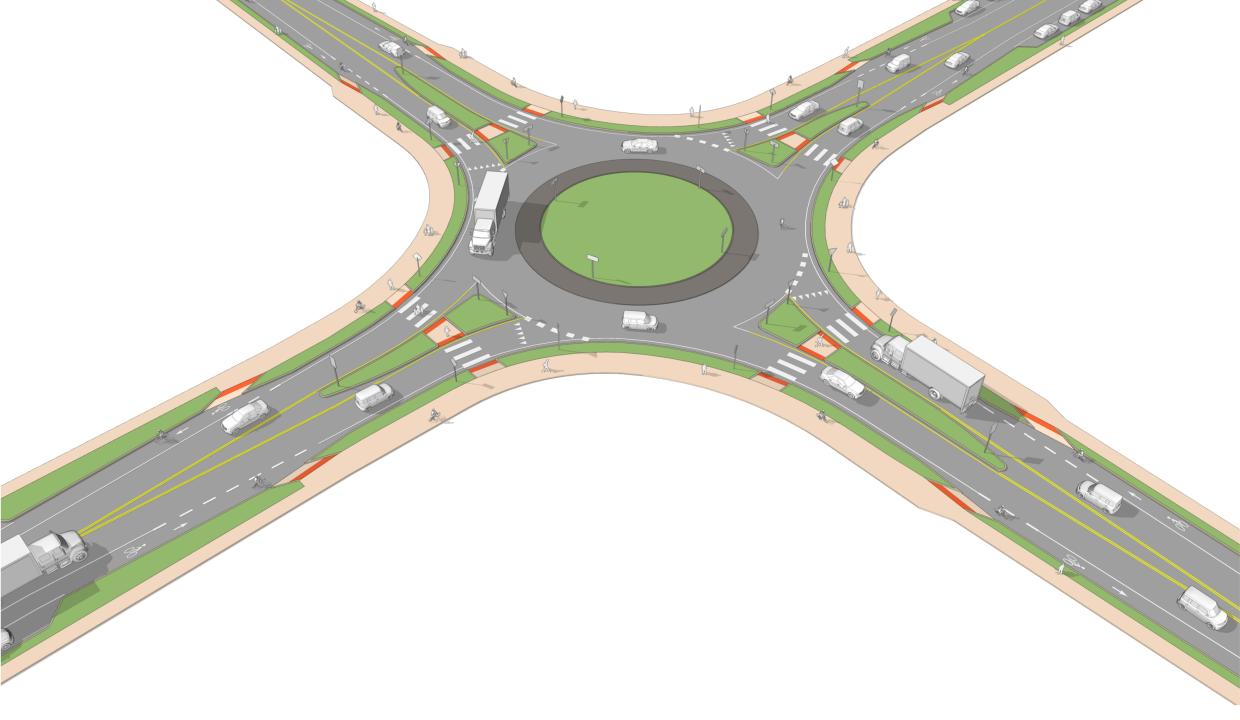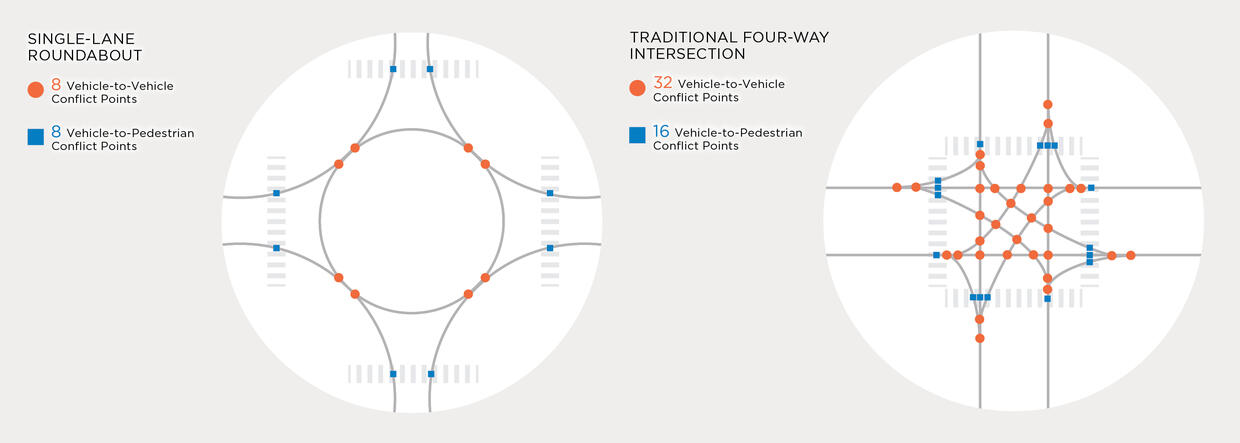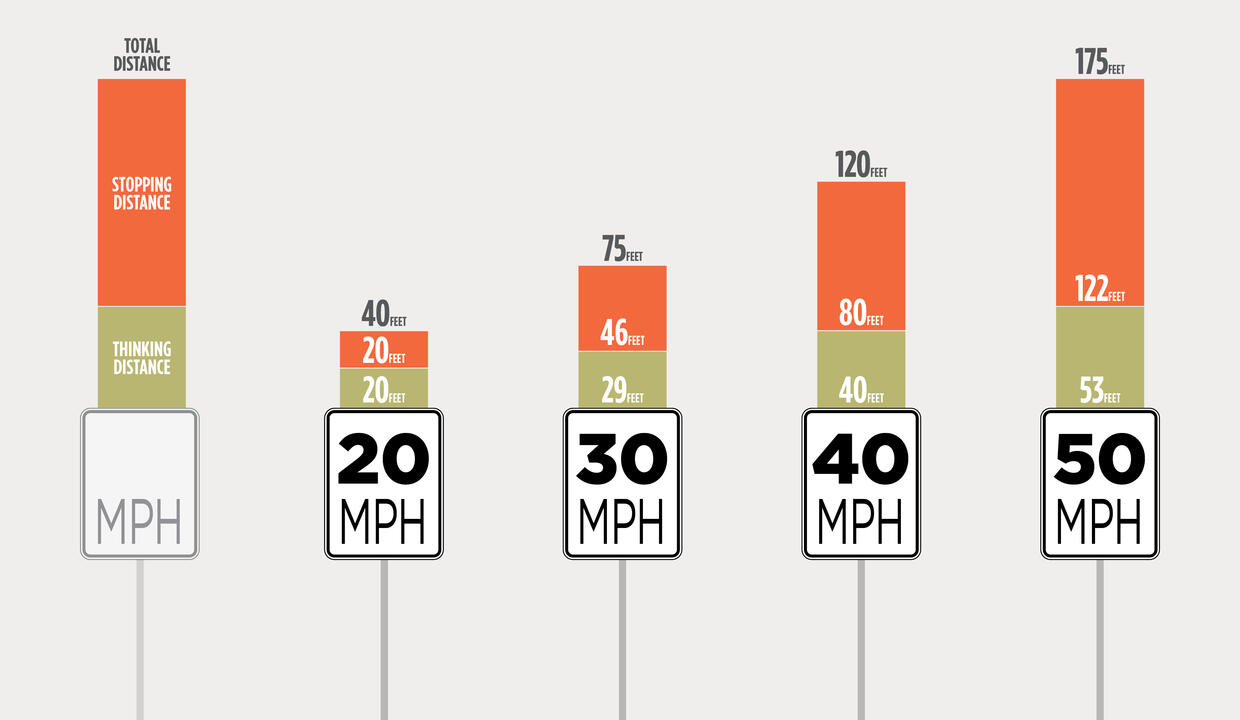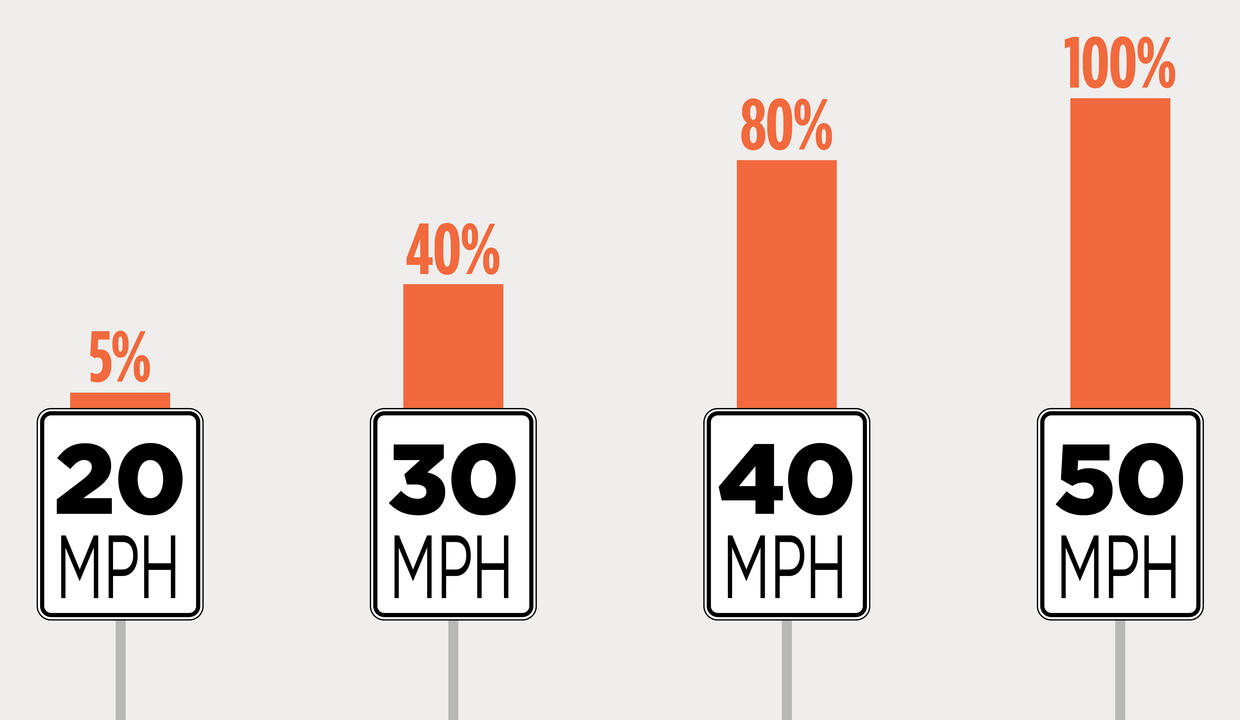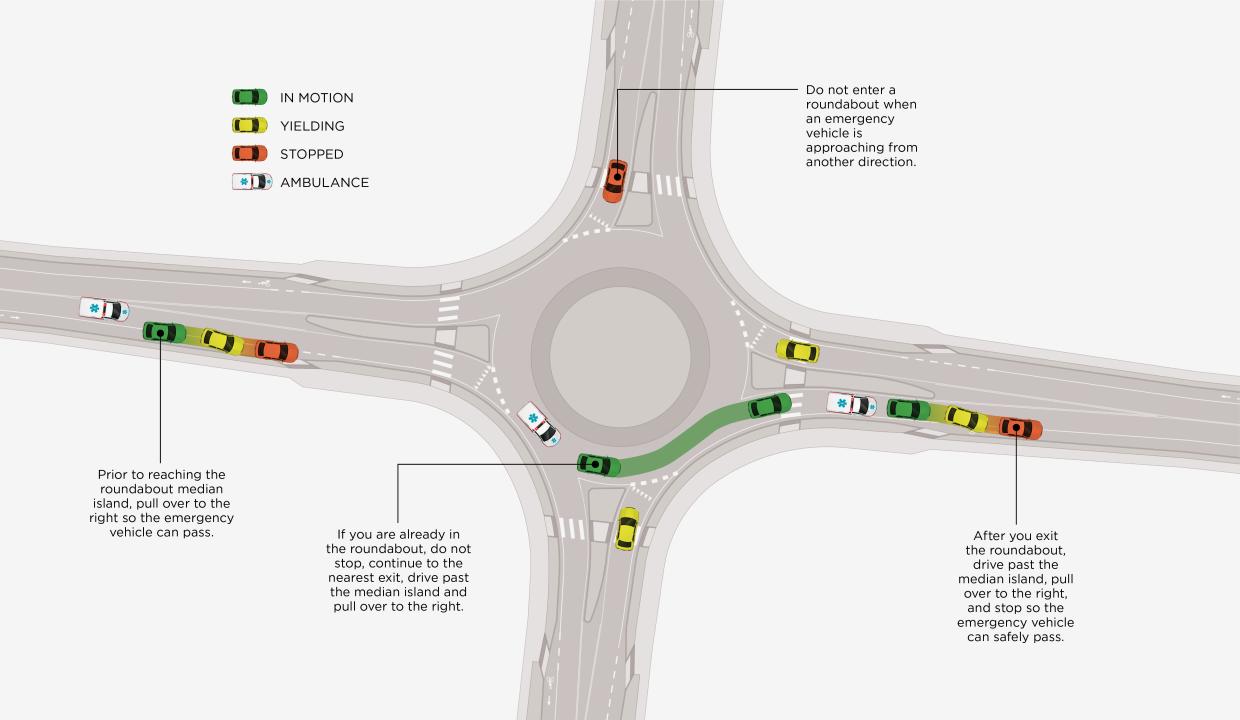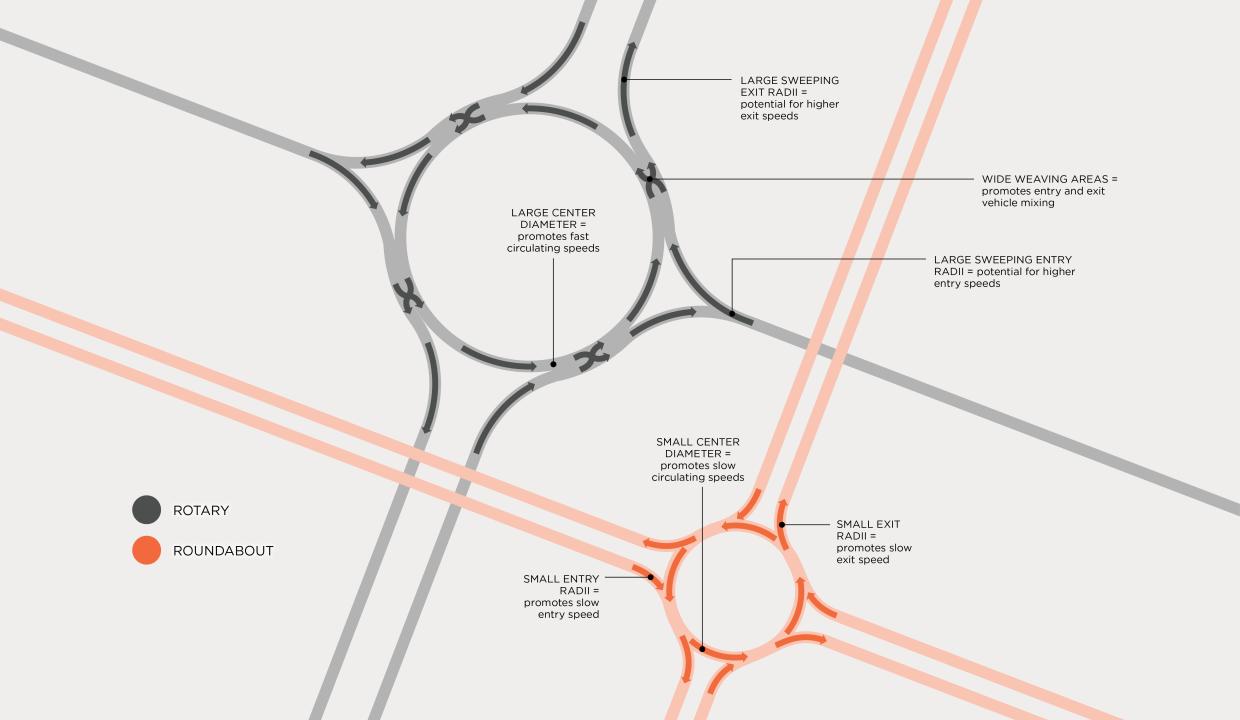Overview
Roundabouts are safer than traditional traffic signal or all-way stop-controlled intersections because they have fewer conflict points between turning vehicles, through traffic, and people crossing. The tight roundabout circles and curbed median islands promote slow driving speeds which give drivers more time to react to people in crosswalks or other vehicles. The slower vehicle speeds also result in less severe crashes if they do occur.
Source: Guidelines for the Planning and Design of Roundabouts
Benefits
Safety
- Roundabouts have fewer conflict points between vehicles in an intersection.
- The most severe types of vehicle on vehicle crashes, such as T-bone, left-turn, and head-on collisions are avoided.
- The roundabout central island and traffic medians force drivers to slow down to between 20 and 30 MPH.
- Slower vehicle speeds reduce the stopping distance needed which helps drivers avoid crashes.
- Slower vehicle speeds help drivers recognize people trying to cross the road.
- Slower vehicles speeds lessen the chance for fatal and serious injury crashes.
- People walking cross one stream of traffic at a time. People walking can pause between the traffic entering the roundabout and exiting the roundabout.
- Roundabouts reduce the conflict points between people biking and vehicles.
- Slower vehicle speeds are closer to the speeds of people biking, which increasers their comfort.
- Converting an Intersection with stop signs to a roundabout can reduce property-damage-only crashes by 52% and fatal and injury crashes by 84%.
- Converting an intersection with traffic signals to a roundabout can reduce property-damage-only crashes by 48% and fatal and injury crashes by 78%.
Source: Guidelines for the Planning and Design of Roundabouts
Source: Roundabouts: An Intersection Alternative Overview
Traffic Operations
- Roundabouts are more efficient than stop-controlled intersections by keeping traffic moving.
- Roundabouts eliminate wasted time waiting at red-lights at traffic signals during the off-peak hours.
- Roundabout vehicle queues waiting to enter the intersection generally keep moving and can be shorter than at traffic signals.
Emergency Response
- Roundabouts can improve travel times for emergency vehicles responding to emergencies by eliminating unnecessary stops and delays.
- Emergency vehicles do not have to negotiate red-lights with the potential for unexpected through vehicles.
- Slower vehicles speeds give other drivers more time to react to emergency vehicles.
Source: Guidelines for the Planning and Design of Roundabouts
Environmental impacts
- Slower moving vehicles make less noise.
- Roundabouts reduce the need to come to a complete stop which makes car less noisy.
- Roundabouts reduce vehicular idling which improves air quality and reduces fuel consumption.
- Roundabout islands can be landscaped to reduce urban heat-island effects.
- Roundabouts with landscaped islands or permeable pavers can reduce storm water run-off.
Resiliency
- Roundabouts do not require constant maintenance like traffic signals.
- Roundabouts operate during power outages/
How are roundabouts different from rotaries?
- Roundabouts are designed with slow vehicle speeds in mind and their central island and traffic separator islands make drivers react to them and force them to slow down. Rotaries are large circular intersections with wide sweeping lanes that allow vehicles to drive at much higher speeds.
- Roundabouts always require the entering traffic to yield to vehicles in the intersection. Not all rotaries have yield signs on all entrances.
- Roundabouts with multiple lanes require drivers to choose a turn lane before they enter the intersection. No lane changes are required within roundabouts. Most rotaries do not define turn lanes and do not have clear lanes marked within the circle; therefore, drivers sometimes can change lanes before their exit.
Source: Guidelines for the Planning and Design of Roundabouts
Massachusetts roundabout examples
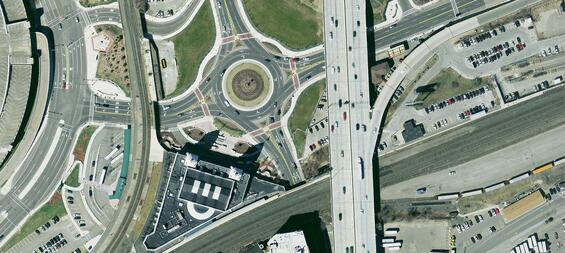
Worcester, Washington Square. Urban multilane roundabout.
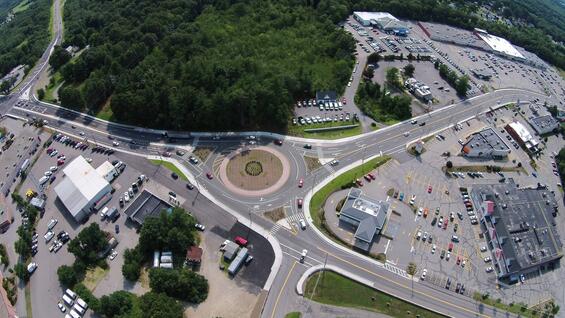
Hudson, Route 85. Multi-lane roundabout.
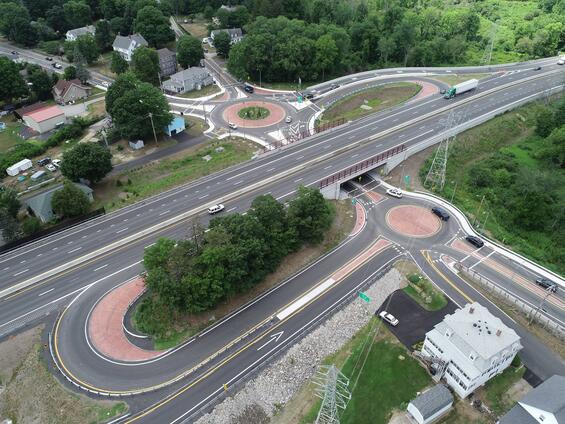
Millbury, Route 146/W. Main Street. Freeway interchange side-by-side roundabouts, one of which being a mini-roundabout.
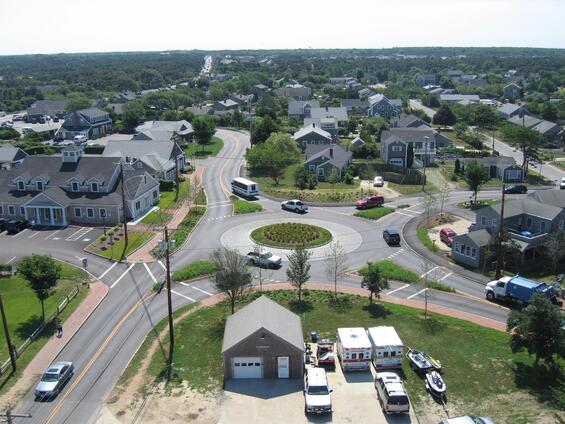
Nantucket, Sparks Avenue/Hooper Farm Road. Roundabout near fire station.
